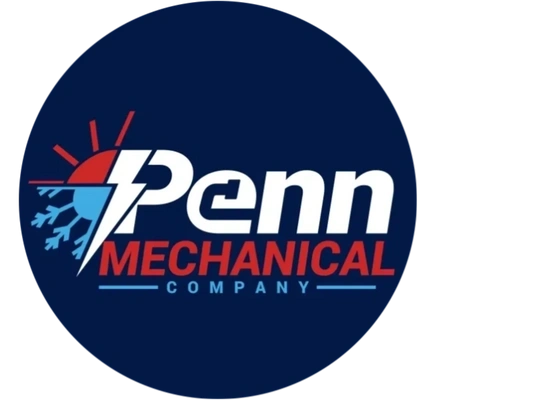Air Duct Sealing
Air Duct Sealing in Berks County Pennsylvania — Stop Leaks, Boost Comfort | Penn Mechanical Company
Even the best A/C or furnace can’t overcome leaky ductwork. Small gaps at seams, boots, and cabinets let conditioned air spill into attics and basements while pulling dusty, humid air back into the system. The result? Hot/cold rooms, longer run times, higher bills, and indoor air that never quite feels clean. If you notice a faint whistle at registers, dust streaks around grilles, or a filter that gets filthy fast, air is escaping (or being sucked in) where it shouldn’t.
Penn Mechanical Company seals and tunes duct systems so the air you pay to condition reaches your rooms quietly and efficiently.
Do You Need Duct Sealing? (From general clues to specific signs)
- One or two rooms stay stubbornly warm/cold or take forever to stabilize
- Dust builds quickly after cleaning; attic/crawl odors appear when the blower starts
- The system runs longer than it used to or short-cycles with little improvement
- Whistling/rattling at grilles; visible gaps or loose boots at the ceiling/floor
- Condensation/sweating on metal ducts or rusty boots in summer
- Dark dust lines around supply registers or at the filter slot/cabinet door
If two or more sound familiar, sealing will pay off in comfort and efficiency.
- BBB A+ Rated
- owner over 30 years business
- 100% Satisfaction Guarantee
- Fully Licensed & Insured
- On-Time Guarantee
- Upfront Pricing
Why Leaks Hurt Comfort (and Wallets)
- Supply-side leaks dump cooled/heated air into unconditioned spaces, rooms get less airflow, equipment runs longer, and bills climb.
- Return-side leaks pull dusty, humid, or musty air from attics/crawl spaces into the system filters, load fast, coils foul, and indoor air quality drops.
- Pressure problems from leakage make systems loud and inefficient; your blower works harder to move less air.
Our Duct Sealing Service: What’s Included (the functions that matter)
1) Inspect & Test
- Room-by-room walkthrough to locate comfort complaints and visible gaps
- Static pressure checks at the air handler to identify starved returns/restrictions
- Targeted smoke tracing and access inspections for hidden leak paths
2) Seal Supply & Return Paths
- Mastic at seams, takeoffs, S-cleats, and transitions (UL-181 compliant)
- UL-listed foil tape where specified (no cloth duct tape, ever)
- Boot-to-drywall sealing to block attic/crawl infiltration around grilles
- Filter cabinet & coil cabinet gaskets so air enters through the filter, not around it
- Replace crushed or torn flex sections that can’t be sealed reliably
3) Correct & Protect
- Re-hang sagging flex with proper supports; gentle radiuses on turns
- Re-insulate sealed metal ducts in unconditioned spaces to stop sweating and losses
- Label balancing dampers for future fine-tuning
4) Verify & Document
- Recheck static pressure and temperature split; spot airflow checks at key rooms
Show before/after results so you can see the improvement, not just feel it
Materials & Standards We Use (and what we avoid)
- Yes: UL-181 mastic, UL-listed foil tape, mesh reinforcement on large seams, proper collars/draw-bands on flex connections
- No: cloth, duct tape, sloppy tape-only seams, unsupported long flex runs, panned building cavities as returns.
Benefits You’ll Notice Right Away
- More even temperatures across floors and far rooms
- Quieter operation, less hiss/rumble from leaks and turbulence
- Cleaner indoor air with less attic/crawl infiltration and slower filter loading
- Shorter run times & lower wear on blowers and coils
- Better dehumidification in summer because the coil finally sees the design airflow
Sealing vs. Repair vs. Replacement: Which Do You Need?
- Seal when the layout is right, but leaks and loose connections waste air.
- Repair when sections are crushed, disconnected, or poorly supported.
- Replace/redesign when ducts are undersized, rusted through, or the home has changed (additions, finished spaces), and airflow targets can’t be met.
We’ll show side-by-side options and let you choose.
What You Can Do after sealing (to keep gains long-term)
- Change filters on schedule starved filters mimic duct problems
- Keep supplies/returns unblocked by rugs and furniture
- Peek into attic/crawl spaces annually for critter damage or crushed flex
- If you ever smell attic/crawl air at a register, call boots may have loosened
Frequently Asked Questions
No proper sealing and smoother transitions typically reduce hiss and rumble.
We perform static pressure and targeted smoke checks; for complex projects, we can discuss pressure-based leakage testing.
We prioritize mechanical access + mastic because it’s durable, inspectable, and serviceable. If a section is inaccessible, we’ll discuss alternatives.
Most single-system homes are completed same day; larger/complex systems may take longer. You’ll know the scope up front.
Why Homeowners Choose Penn Mechanical
- Design-minded approach: measure first, then seal where it counts
- Licensed, background-checked technicians who explain every step
- Flat, up-front pricing approved before work begins
- Neat workmanship: tidy seals, labeled dampers, and clean grilles
- Documented results you keep the before/after readings
Ready to Keep Your Air In Your House?
Tell us which rooms struggle and where the ducts run (attic, basement, crawl). We’ll inspect, seal, and verify so your system delivers the comfort you’re paying for. Prefer to talk it through first? Call 484-877-8864 and a duct system specialist will help you plan the smartest next step.
